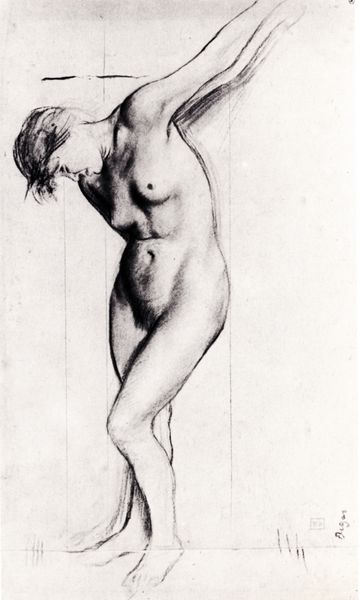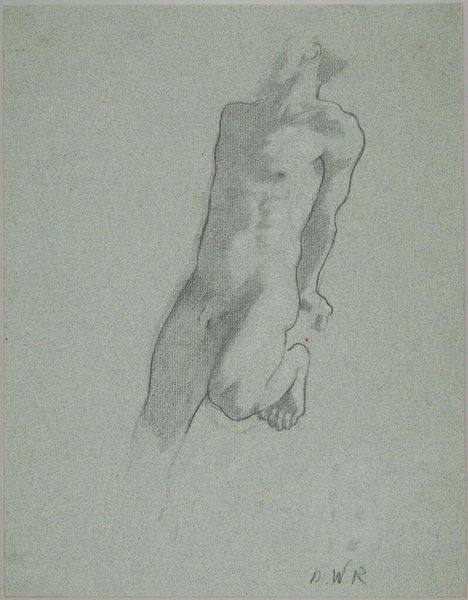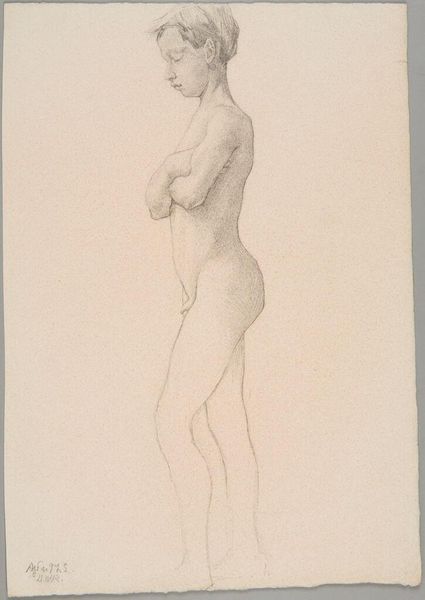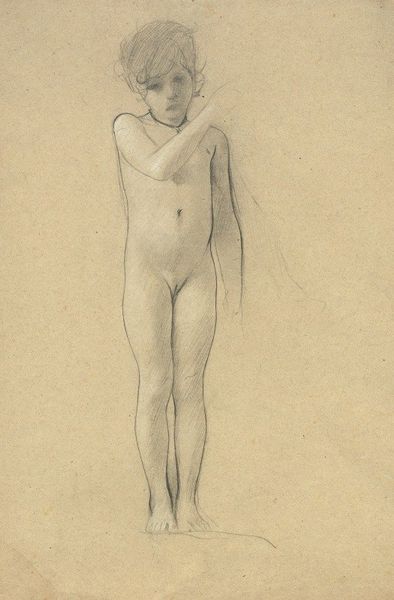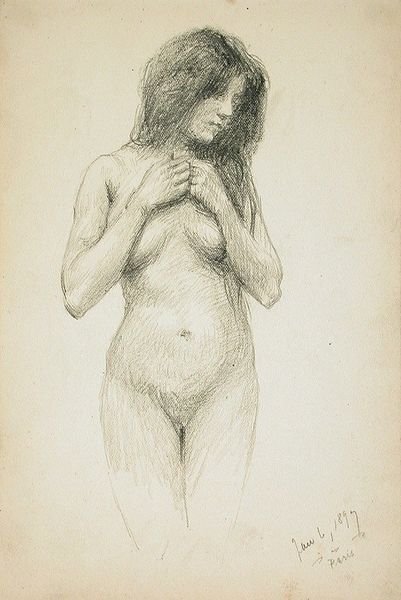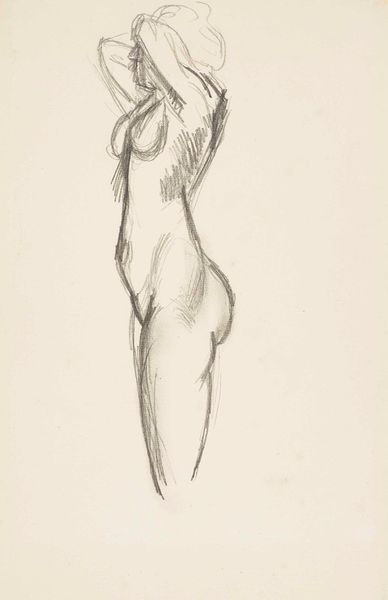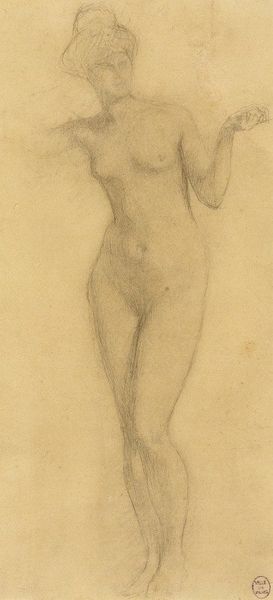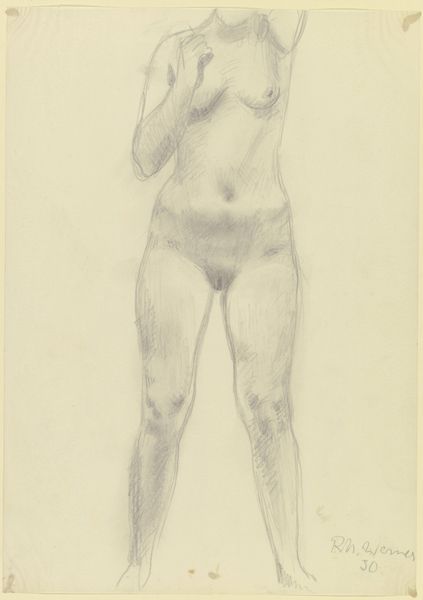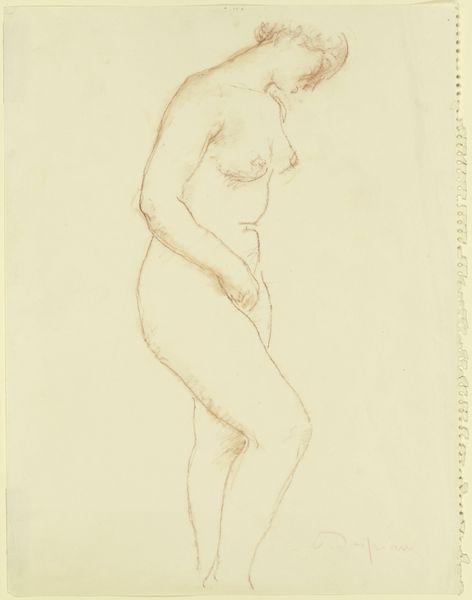
Copyright: Public domain
Curator: This is "Study for Pygmalion," a pencil drawing crafted around 1870 by the hand of Edward Burne-Jones. What springs to mind for you when you first gaze upon it? Editor: There’s a quiet vulnerability radiating from this figure; it feels fragile, almost hesitant. It looks unfinished, more like a whispered suggestion than a shout. Curator: Exactly. It embodies a state of becoming, which resonates perfectly considering the subject. Burne-Jones explored the Pygmalion myth extensively. Editor: The figure's pose almost seems self-protective, like she’s shielding herself, still unsure of her newfound existence. But her slender arms add an aura of feminine beauty. I think it fits nicely with a romantic myth theme! Curator: Note the precision in rendering her form – the delicate curve of her waist, the subtle shading that suggests the roundness of her limbs. Editor: True, and it's this juxtaposition between meticulous detail and an almost ethereal lightness, making you think about sculpture techniques of soft and hard touches. Is it a real woman or just his own imagination materialized in charcoal? Curator: Well, the classical subject filtered through a Romantic lens lends that dreamlike feel. But the artist wants us to think of something else… consider the nature of artistic creation. Burne-Jones is reflecting on the power to create life. He's delving into a self-referential inquiry! Editor: An ode to artistic transformation indeed! Curator: In its apparent simplicity, "Study for Pygmalion" really unravels profound themes about life and creative aspiration. Editor: Ultimately, the beauty of this simple, subtle artwork makes you wonder if there is another study somewhere, or even a whole sculpture series perhaps, or where we will find these themes developed in other artwork!
Comments
No comments
Be the first to comment and join the conversation on the ultimate creative platform.

